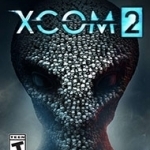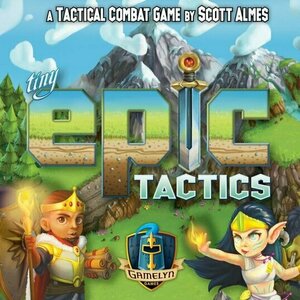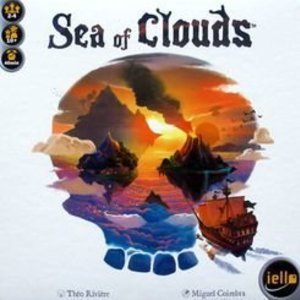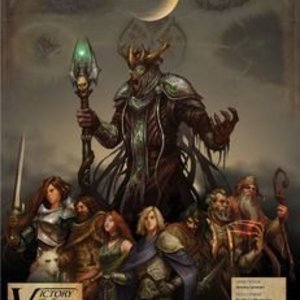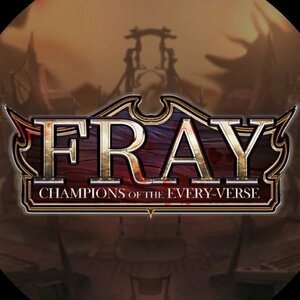Gareth von Kallenbach (971 KP) rated the Xbox One version of XCOM 2 in Video Games
Jun 19, 2019
The success of the game spawned XCOM 2 were once again players must take command of the team of soldiers fighting against an alien incursion.
This timeout players need to command a resistance unit and as before, delegate valuable resources to areas such as combat research, weapons research, scientific research, base expansion, equipment, and much more.
From there base players are free to upgrade the facilities, research new technologies, select which missions to take, and which soldiers and equipment to use. The level of detail is so high that players can even promote their troops, and mourn fallen comrades at the base Memorial.
Typically a player quips their vehicle and assigns squad of soldiers to a combat area where they can use their relegated turn units to move, take cover, assume support position, attack, reload, and so much more. When a turn is complete, players must watch while the enemy takes their turn and he can be a little frustrating to have your poor helpless Squaddie cut down in their prime by enemy you did not notice.
The enemies are extremely advanced, well-armed, incapable of Psionic powers such as being able to mind control your troops and even raise the dead which can be very frustrating is nothing is more demoralizing than cutting down an elite enemy unit only to see them resurrected back in the game.
As with the best elements of the series you’re constantly in an arms race to research new technology and weaponry to keep up with the enemy and just when you think you have turned the corner. The enemy will roll out new units and weaponry to once again put you at a disadvantage. Combine this with the fact that resources and funding are always paramount to your success, players must always maintain good relationships with there’s financial supporters as a lack of funds is more deadly than any combination of alien assaults.
The game is graphically impressive and highly diverse as there are multiple styles of play that can be employed which gives the game an unparalleled level of strategy. It should also be noted that the game is exceedingly difficult at times and I spoke to one player who said that he nearly deleted the game several times while playing it in frustration but was glad he stuck it out because the final confrontation was absolutely epic.
There is a multiplayer mode for the game that allows players to assemble a trained team of units and take on various challenges and while entertaining, I must admit that I spent the majority of my time playing the campaign mode but look forward to playing this more in the future.
XCOM 2 is a very worthy sequel that in many ways surpasses the original in terms of a deeper and more intense story and gaming experience that really draws you in. One can almost feel the horror at seeing the latest alien terror up close and watching your squad members could cut down as you desperately attempt to achieve the mission objective. Whether you want a dose of nostalgia or a solid challenge, I highly recommend XCOM 2 as it is not only a first rate game, it is one of the best games of the year and likely will be the recipient of several awards in the not too distant future.
http://sknr.net/2016/02/29/xcom-2/
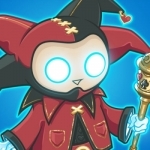
Solitairica
Games
App
"A bright, funny, and engaging mix of ideas that's well worth adding to your home screen." - Pocket...

Space Marshals 2
Games
App
The sci-fi wild west adventure in outer space continues with Space Marshals 2. This tactical...
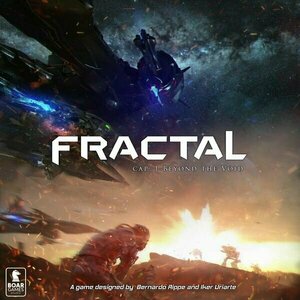
Fractal: Beyond the Void
Tabletop Game
Fractal: Beyond the Void is redefining the 4X genre with an expansive and dynamic strategy game in...
Purple Phoenix Games (2266 KP) rated Tiny Epic Tactics in Tabletop Games
Jul 8, 2021
Disclaimer: There are 5 different modes of play in Tiny Epic Tactics. In this review, I will be focusing on the 2-4 Player Competitive mode. There are also expansions for this game, but this review will not cover those materials. I also do not intend to rehash the entire rulebook, but rather provide a general overview of the rules and gameplay. For a more in-depth look at the rules, pick up a copy of the game from the publisher or at your FLGS. -L
Tiny Epic Tactics is a game of strategy and combat in which players will lead their teams of 4 heroes to fight opponents and attempt to gain control of a number of areas in the realm. To setup the game, unroll the map scroll and place the boxes onto their corresponding spaces. Randomly deal each player 1 Unit card from each class (Fighters, Wizards, Rogues, and Beasts), and give them 4 Unit tokens (meeples) in their chosen color, as well as tracker tokens for Health, Ammo, and Mana. Players will select their 4-space starting location, and will place all 4 of their Units on the map. Shuffle the deck of Tactic cards, and deal 2 to each player. Players will look at the cards and select one to keep in hand, discarding the other. Place the Tactic card deck in reach of all players, and place the Control Card nearby, with the 3 Flag tokens on the Start space. The game is ready to begin!
Over a series of rounds, players will take turns performing actions until either one player has had all of their Units captured or one player has captured the final Flag token (based on player count). The remaining players will take one final turn, and then the game ends, VPs are tallied, and the player with the most VPs is the winner! A game turn is made up of four steps, the first of which being to check for Majority Control. To see if you hold a Majority Control over any of the Control Areas on the map, count the number of Units in each triggered Control Area – if your Units make up the majority of Units in that area, advance the corresponding Flag token on the Control card, and if you do not hold the majority, then nothing happens. Once a Flag has been advanced to the final space, it is given to the player who holds Majority Control.
The next step of your turn is to take up to 3 actions with your Units. Possible actions are: Movement, Melee Attack, Missile Attack, and Cast a Spell. All Units have a printed value on their cards for Movement, as well as either Melee Attack, Missile Attack, or Spell Attack value, based on the Unit’s class. All of these actions are pretty self-explanatory, with a couple of extra components – use of Ammo/Mana, rolling dice, advantages/penalties based on Elevation, etc. – that make the gameplay strategic and challenging. The third turn step is to remove Weakened tokens (more on this later), and the final step is to draw a Tactic Card. Look at the card, and either keep it in hand or discard it – you may only ever have 2 Tactic Cards in hand. Play continues in this fashion until the end of the game is triggered, either when a single player has had all 4 of their Units captured or a player has taken the final Flag token. All other players take one more turn and then VPs are tallied for final scoring.
Ok so first thing I want to talk about is the use of boxes to create a 3D map. It is SO COOL. It’s such a unique idea, and one that I honestly haven’t seen before. The added aspect of Elevation in regards to movement and range for attacks really ups the strategic gameplay for me. Want to climb to a higher peak? Ok, that costs +1 movement. Don’t have enough movement to climb up this turn? Then you’re outta luck. Your strategy must always be changing based on where Units are located on the map.
Speaking of strategy, there are several different game elements that you can base your gameplay on – there is no ‘right’ way to play! Maybe you really want to focus on getting Flag tokens, so you try to protect that area and maintain majority at all costs. Maybe you don’t care about the Flags and it’s all about combat to you – you’re on the hunt for enemy Units and Area Control means nothing to you. Or maybe your aim is to complete your Tactic Cards, which will then allow you to perform a special/bonus action upon completion. There are different ways to play this game, and that makes it engaging and entertaining as you must constantly adapt your strategy while trying to figure out how your opponents are playing too!
Another neat element of Tiny Epic Tactics is that on each turn you only have 3 actions – and a single Unit may only perform one action per turn! So you can’t just spend all 3 actions moving and attacking with the same Unit, they must be spread across all of your heroes. That adds to the strategy because you have to set your Units up in advance for certain actions, but must quickly adapt based on the movements of your opponents. You can have a Unit perform a second, different, action on the same turn, but it will then become Weakened. When Weakened, a Unit cannot perform any actions on the next turn, and will have the Weakened condition removed at the end of said turn. Or, on your next turn, you may choose to pay 2 Health to remove the Weakened token and be able to act in that same turn. It’s kind of a gamble – how far are you willing to push your Units, and are you able to sacrifice their abilities for an entire turn in order to removed the Weakened token?
Let’s touch on components for a minute. These components are great, as is to be expected of the Tiny Epic series. The art is colorful and unique, the boxes are sturdy, the cards are nice and thick, and the wooden components are quality. No real gripes from me regarding production quality of this game! The gripe I do have is about the gameplay – specifically a 2-player game. When playing a 2-player game in competitive mode, the game end is triggered after 1 Flag token has been secured. This really can negate any need for strategy or player interaction, because each player starts near a Control Area, and can simply just move there and camp out to take the Flag. In my first games at a 2-player count, I found the gameplay to be kind of bland and not engaging because of this. At higher player counts, you have to interact with opponents on the map as you try to capture Control Areas. If at a 2-player count, you were required to secure 2 Flag tokens, or maybe just mandate that the secured Flag must be the one located in the center of the map, it would encourage more interactions between the players, and thereby elevate the strategy and gameplay in my opinion. Just something to consider.
Overall, I think that Tiny Epic Tactics is a solid game in this series. It is not my favorite by any means, but the gameplay and mechanics fill a gap left by the other Tiny Epics. The strategy required can be high-level, but the simplicity of the physical gameplay makes it feel accessible and inviting to all types of gamers. If you’re looking for a great 2-player Tiny Epic, maybe keep looking, but for a 3-4 player game, Tiny Epic Tactics hits the spot. Purple Phoenix Games gives it a tactical 8 / 12.
Purple Phoenix Games (2266 KP) rated Sea of Clouds in Tabletop Games
Sep 5, 2019 (Updated Jul 1, 2020)
In Sea of Clouds, players are Captains of mighty air pirate ships. That’s right – flying pirate ships! Just like the pirate days of yore, your goal is to recruit the best crew, plunder for treasure and relics, and find the best rum along the way. But be careful because your rival pirate Captains have their eyes on the same prize – so make sure you’ve got a way to outsmart them and sail your way to victory!
Sea of Clouds is a game of card drafting, set collection, and push your luck in which players are trying to amass the most end-game victory points. Played over a series of rounds, players take turns drafting cards, performing bonus actions, and engaging in combat with their neighboring Captains. To setup, each player takes their chosen Captain board, the central board is placed in the middle of all players, and 1 loot card is placed face-down on each of the 3 loot spaces on the central board. The remaining cards are shuffled and create a draw pile. Now you are ready to play!
Each round consists of divvying up shares of loot between all players. On your turn, you will take the face-down card(s) in the #1 loot spot and look at them secretly. Decide whether you want to take the share, or leave it and look at the next one. If you decide to keep the card(s), add them directly around your Captain board in their corresponding spaces. If you decided to leave the share, add 1 card from the top of the draw pile to that share, and then look secretly at the cards in the #2 loot spot. Proceed in the same manner as before with the cards in the #2 and #3 loot spots, if necessary. If none of the shares catch your fancy, draw 1 card from the top of the draw deck to add to your ship. Play continues to the left, and once everyone has had their turn, move the round marker ahead on the central board, and continue on to the next round in the same fashion. At the end of certain rounds of the game, following the divvying of shares, there will be a boarding/combat turn – players will compare the combat strength of their crew (recruited during the divvying of shares) to that of their neighboring Captains. If your crew’s strength is greater than your neighbor, resolve any rewards/effects on your pirate cards. If your strength is less than your neighbor, you lose the combat and do not collect any rewards. Once all combats have been resolved, everyone discards all their crew cards, and the next round begins. At the end of the game, players count up their victory points, and the player who has amassed the most is the winner!
I’m going to get right to the spoilers and say that I love Sea of Clouds. It has some of my favorite mechanics (set collection and card drafting) and it is easy to teach, learn, and play. Do not let the simplicity of play fool you, however, because strategy is definitely a key to victory. One thing that takes this strategy to the next level for me is that there will be times when all players know what cards are in each share of loot. You’ve got to pay attention to which shares your opponents are taking, and figure out a way to stop them from collecting complete sets, or try to force them to collect a share they may not necessarily want. Also, as shares go unclaimed, they get more cards (and eventually money) added to them, so you have to weigh the risks of collecting a share because of one specific card, even though there may be a ‘bad’ card in that share for you. You always have to be adjusting your strategy based on what cards show up in each share, so there is no idle time for any player in this game.
Another neat thing I like about the strategy of this game is that all the cards have backs based on their card type. So all Relic cards have the same back, all Crew cards have the same back, etc. Even though you may not know what is on the other side of the card, you might just take a chance on a share of loot because it has the card types you are trying to get. That’s where the push your luck comes in, because until you look at a share of loot, you aren’t sure if that card is the one you need. Maybe share #1 has a couple cards you could use, but share #2 has a relic card that could be the final one in your set! Are you willing to risk passing up a decent share of loot to see if the next share has what you need? Or maybe the top of the draw deck has the card type you want – would you pass up all 3 shares of loot for one blindly draw card in hopes that it is to your benefit? There is no single ‘right’ way to play, and that is what makes this fun.
The only drawbacks of this game for me are the boarding/combat turns. I like the idea of this player interaction, but it doesn’t always work fairly in my opinion. At the end of each boarding/combat turn, all players discard all of their Crew cards, and you have until the next boarding phase to recruit a new crew. And sometimes, just based on the luck of the draw, you just never get the opportunity to hire anybody. Maybe your opponent takes the share with a Crew member before you get a chance to, or maybe the deck just isn’t evenly shuffled enough to get enough Crew cards out into the playing field. So if you have no Crew, you automatically lose the combat, and that can be detrimental to your strategy – opponents could steal or discard some of your cards, and cause you to lose end-game points. Maybe if there was a draw pile where you could pay a certain amount of gold to hire a Crew member, that would make the game feel a little more fair in the combat department. But ultimately, you’re at the mercy of the luck of the shuffle/draw, and sometimes it just doesn’t balance out.
All in all, I think Sea of Clouds is a great game. It’s a relatively simple game, but one that still requires strategic thought. The push your luck element feels unique in this game because you don’t really lose anything if your luck runs out, you just don’t necessarily get as far as you wanted. The game itself is pretty to look at – the artwork is very well-done and the colors really pop and draw the eye to the cards. This may not be in my Top 10 of favorite games, but it’s one that I will definitely be keeping in my collection. Take a chance on this one if you haven’t so far – it might surprise you. Purple Phoenix Games gives Sea of Clouds a high-flying 12 / 18.

World Conqueror 4
Games
App
World Conqueror 4 is the newest-released game by EASYTECH in 2017. We will continue to develop...
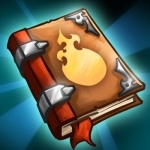
Battleheart Legacy
Games and Entertainment
App
The spirit of Battleheart returns, re-imagined! In Battleheart Legacy, you will explore a rich and...
Purple Phoenix Games (2266 KP) rated Darkest Night (First edition) in Tabletop Games
Jun 12, 2019
Once prosperous, your kingdom has fallen victim to a powerful Necromancer who has shrouded the realm in darkness. His minions traverse the land doing his bidding, and his army, as well as his powers, continue to grow. All hope is lost….or is it? Four heroes band together in a final attempt to defeat this evil being. Each brings unique powers and strategies to the table, and success will come in one of two ways – by defeating the Necromancer in direct combat, or by gathering Holy Relics and performing a ritual to undo his powers. But be warned: the Necromancer grows stronger with every passing moment, so be sure your chosen strategy is the right one. Otherwise you too will fall victim to the Necromancer’s might.
Darkest Night is a cooperative game where players take on the role of the heroes attempting to defeat the Necromancer. Each turn has 4 steps – Perform any start-of-turn actions, draw/resolve an Event card, perform one action, and defend against Blights (monsters). Each equipped with a unique set of powers, the heroes must work together to search the land for Holy Relics and destroy Blights before the kingdom is overrun. Once all of the heroes have had their turn, the Necromancer gets his turn, which entails advancing the Darkness track, moving towards the closest detected hero, and creating more Blights. Victory comes in two forms – ritual or combat. If the heroes collectively uncover three Holy Relics, they can use them in a ritual to break the Necromancer’s powers. Or if a hero gets strong enough, they could directly fight the Necromancer. If, at any point, the Monastery is overrun by Blights, the game ends in failure and the kingdom has fallen into darkness.
DISCLAIMER – This review is for the Darkest Night (First Edition) base game. There is a second edition, and several expansions, but I have not had experience with any of those, so my thoughts are solely based on the First Edition base game. -L
I’m just going to be up-front and let you know that I am not a huge fan of this game solo. The main reason is that this game is for four heroes, regardless of actual player count. So playing solo means that I have to control all four heroes. Controlling one hero, I can do. Controlling two heroes takes more focus, but is usually manageable. But controlling four heroes at once? Madness! At least for me it is. There is so much more for a single person to keep track of, and it can be pretty overwhelming. There are so many variables to keep track of, I often end up making mistakes – forgetting to draw Event cards, accidentally using one hero’s ability when it is a different hero’s turn, forgetting to give one hero a turn in a round because I thought they already had one, etc. If I am lucky, I will catch a mistake in-progress, or one turn later, and can rectify it. But to be honest, of all the mistakes I make while playing Darkest Night, I probably won’t catch 25% of them. Which can either make a game super easy, or super brutal. You might tell me, “Focus!” or “Pay better attention!” but believe me, I’m trying! I just feel like four heroes for one person is too much.
Patience is a virtue, but apparently I have none when it comes to this game. And by that, I mean that I feel like it takes an eternity to accomplish anything in this game. On your turn, you only get one single action. And movement is an action. Picture this – I am trying to move my hero to the opposite end of the kingdom (at least 2 spaces away). I am going to have to spend 2 complete rounds (active hero turn, other hero turns, Necromancer turn, x2) just to get there. And then once I finally get there, I have to wait for the 3rd round to even do anything in that location! I just get frustrated at the fact that something as simple as moving a few spaces takes multiple rounds to accomplish. Since everything takes so long to do, you have to be thinking so far into the future with every turn. That makes it difficult for me to strategize, and the game just feels so inefficient, especially in solo play, when you have to control all of the heroes. It can be tricky enough planning a few turns in advance for a single hero, but being in charge of all heroes just makes the job more complicated. And maybe I’m just not patient enough for this game, but I think that if every hero got two actions per turn, the game would be a lot more manageable.
This will come as no surprise to you, but I enjoy this game more in a group rather than solo. This game is cooperative, and I like being able to talk strategy with my fellow gamers, rather than trying to figure everything out for each of the four heroes by myself. Group play also allows me to focus my attention on one single hero instead of multiple, which makes the game feel less overwhelming to me. And perhaps the second edition or expansions address some of the issues I have with the game, but for the time being, Darkest Night is low on my list of solo games.
https://purplephoenixgames.wordpress.com/2019/01/04/solo-chronicles-darkest-night/
Purple Phoenix Games (2266 KP) rated Fray: Champions of the Everyverse in Tabletop Games
Jul 1, 2020
DISCLAIMER: We were provided a prototype copy of this game for the purposes of this review. These are preview copy components, and I do not know for sure if the final components will be any different from these shown. Also, it is not my intention to detail every rule in the game, as there are just too many. You are invited to download the rulebook, back the game through the pending Kickstarter campaign, purchase it from your FLGS, or through any retailers stocking it after fulfillment. -L
Fray: Champions of the Every-Verse (referred to as just Fray from now on) is a game of dice rolling, grid movement, and fighting in which players are trying to eliminate all opponents and be the last remaining player in the arena. Before setting up to play, you must first determine how many Champions each player will control. Controlling only 1 Champion is considered “Single Mode” and makes for a quicker play-time. Players can control up to 3 Champions in a single game. After determining how many Champions each player will control, set up the game as described in the rulebook. You are now ready to begin!
A game of Fray is divided into a number of rounds, and to begin each round, all players must select one of their Champions to be the round leader, then roll a d6, and add the appropriate Initiative modifier. This determines the turn order for the round – the highest Initiative gets to go first, and so on in descending numerical order. It is important to note that in future rounds when determining Initiative, you may not select the same Champion to lead for consecutive rounds. After Initiative has been determined, player turns begin. On your turn, you will perform 2 Phases: an Item Phase and a Champion Phase. During the Item Phase, you have the opportunity to play as many Item cards from your hand as you wish. Item cards can give you special abilities or buffs for future turns, or can be played as reactions to opponent’s actions, depending on the card.
Once your Item Phase is done, you move to the Champion Phase. To begin your Champion Phase, choose which Champion you are using and roll the 3 Battle Dice. These dice help activate abilities on your turn. The chosen Champion may now move a number of squares as stated on their card. After movement, your Champion can now activate 1 action from the following: Attack, Defend, or Champion Ability. All actions require you to spend a number of resources in order to perform them, so this is where the Battle Dice come into play. Once you have performed your action, resolve abilities as needed (rolling a save against an attack, rolling the damage die, etc.). If, after resolving abilities, you still have unused Battle Dice, you can choose to store up to 2 of them for use on your next turn. You then repeat the entire Champion Phase with your next available Champion. Once you have used all of your Champions, your turn ends.
After all players have had their turns in a round, you move to the Loot Phase. Any player with any Champion within 3 spaces of the Loot Marker on the board gets to draw 1 Loot card. The first player then rolls a d6 and the Scatter die, and moves the Loot Marker appropriately for the next round. The new round is ready to begin, with all players rolling for Initiative once again. During play, if a Champion is reduced to 0 hit points, that Champion leaves the game. The player with the last remaining Champion on the board is the winner!
Ok, I know that seems like a lot, but the gameplay is actually pretty intuitive and streamlined. Here’s how a turn breaks down: play Item cards, roll Battle Dice, move Champion, perform 1 action, resolve, repeat with your other Champions, turn ends. That’s it! After going through the steps with my first Champion, the process just clicked and the gameplay flowed pretty seamlessly. It admittedly seemed pretty daunting at first when I was reading through the rules, but in the actual game, it is easy to pick up.
With the purpose of this game being knocking out all your opponents, obviously strategy is a pretty big aspect of the gameplay. All Champions have special abilities, attack combos, and types of attacks. Some Champions are only melee fighters and can interact with opponents 1 square away, others are only short- or long-ranged and must be at a distance to attack, and some have the option to be either melee or ranged. Each Champion requires a bit of a different strategy to be played successfully, and you’ve got to be able to adapt on the fly. That being said, this is a competitive combat game, so some players might not like being pitted directly against opponents and being targeted by others. The other strategic aspect to consider is the location of the Loot Marker on the board. The only way you ever get to draw Item cards is if you are within 3 squares of the Loot Marker at the end of the round. Are you willing to risk combat for a chance to gain an Item card? Or are you content with skirting the battlefield and letting your opponents take each other out? All things to consider when playing Fray.
The biggest drawback of Fray for me has to do with some components, or lack thereof. But as I stated earlier, this is only a prototype copy of the game, and I am sure that these things will be addressed in the final production copies! For starters, I’d like to see Turn Order Markers. Since the turn order varies each round based on Initiative, it would be nice to have some numbered markers to help players keep track of the order for the round. Along those lines, maybe a Turn Order Reference card for players could be added as well. The turn steps are generally pretty straightforward, but just having a reminder of the different types of movement, or what resources are required for which actions would be nice. And my final consideration for edits would be to include on each Champion card whether that Champion is a melee, short-ranged, or long-ranged fighter. That breakdown is in the rulebook, but having it on the card would be beneficial as well! Besides those three notes, the components of this prototype copy are phenomenal. The board, cards, and chits are all nice and sturdy. All of the game dice are high quality and easy to read. I know Brain Sandwich Games has plans for sculpted minis for the Champions, but even the simple standees in this copy are easily identifiable and will withstand many plays. The art of the cards is very detailed and awesome to look at. All in all, already a pretty great quality game!
Ultimately, I think Fray is a great game. It may need a little polishing up with some components, but the current gameplay is ready for production. I am not typically someone who enjoys directly competitive games, but Fray was one that I thoroughly loved. It has enough elements of strategy, combat, and luck of the dice rolls that it doesn’t feel targeting or confrontational. I am eager to follow the Kickstarter campaign and see what else Brain Sandwich Games has in store for an already awesome game! I would definitely recommend checking this one out – it’s a unique twist on a standard arena combat game.
